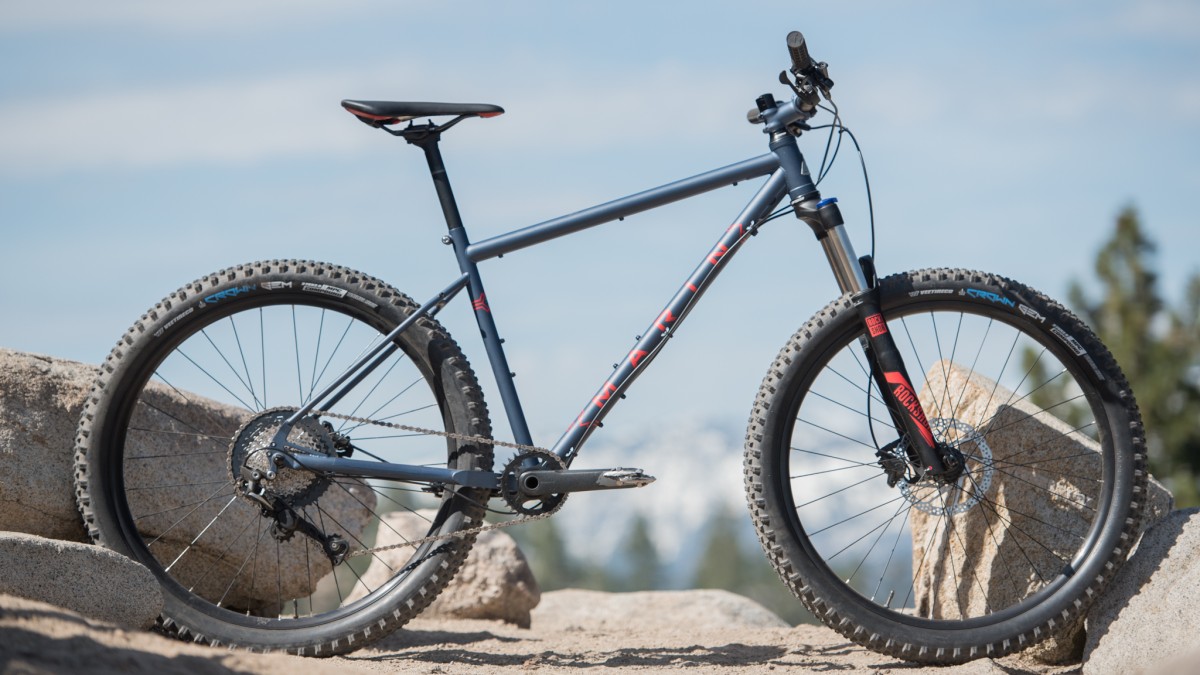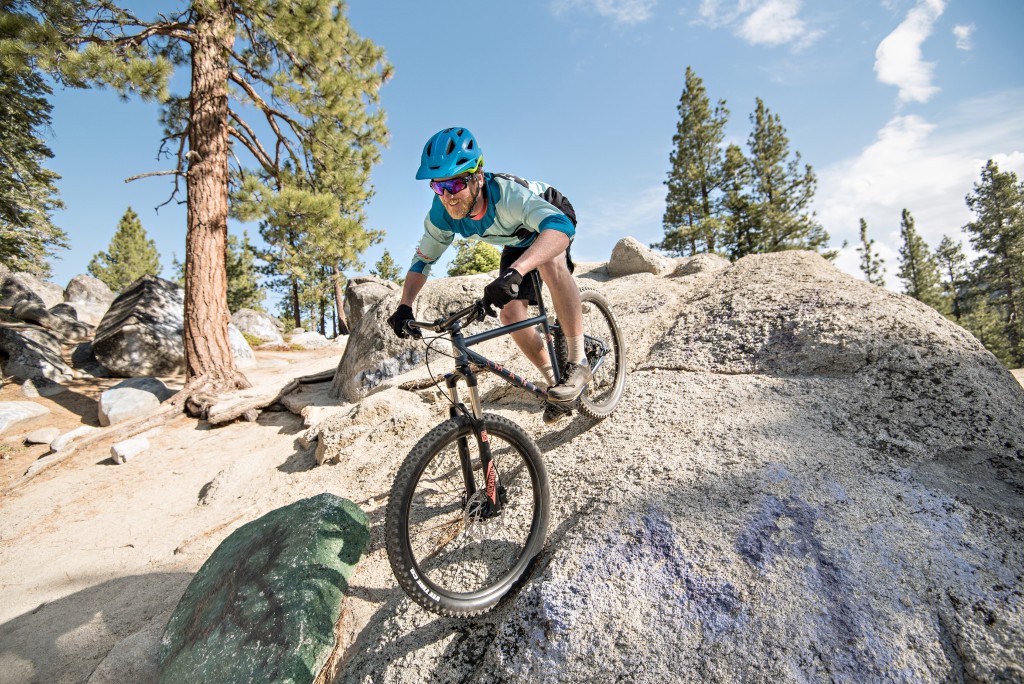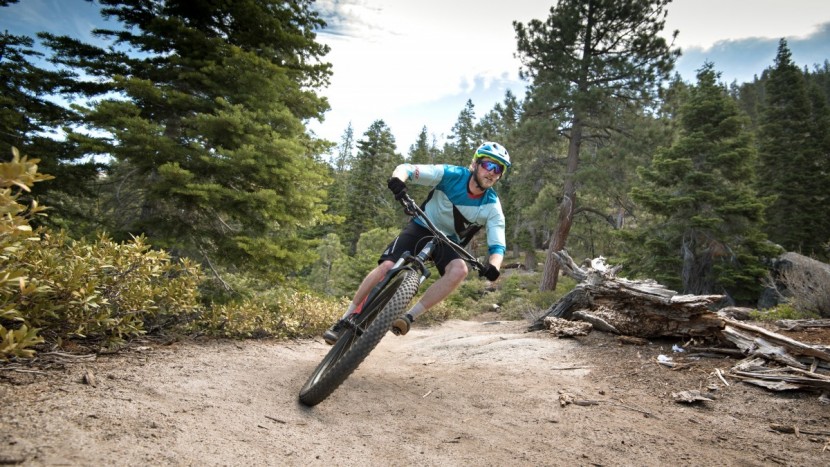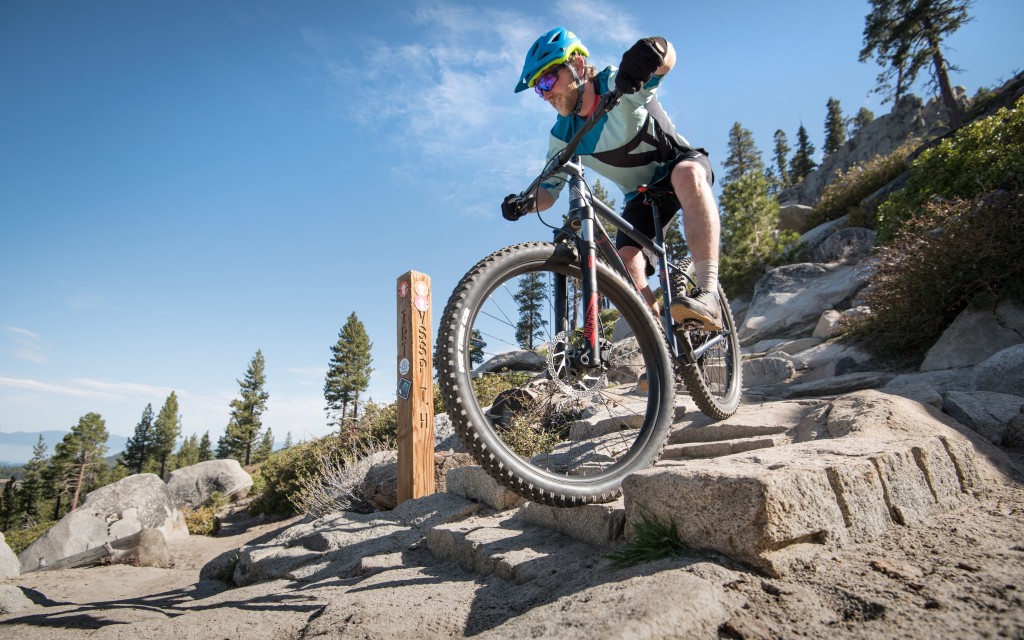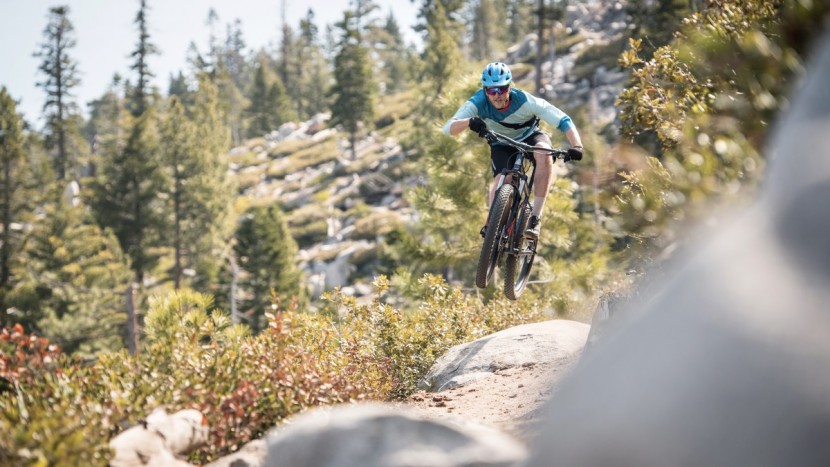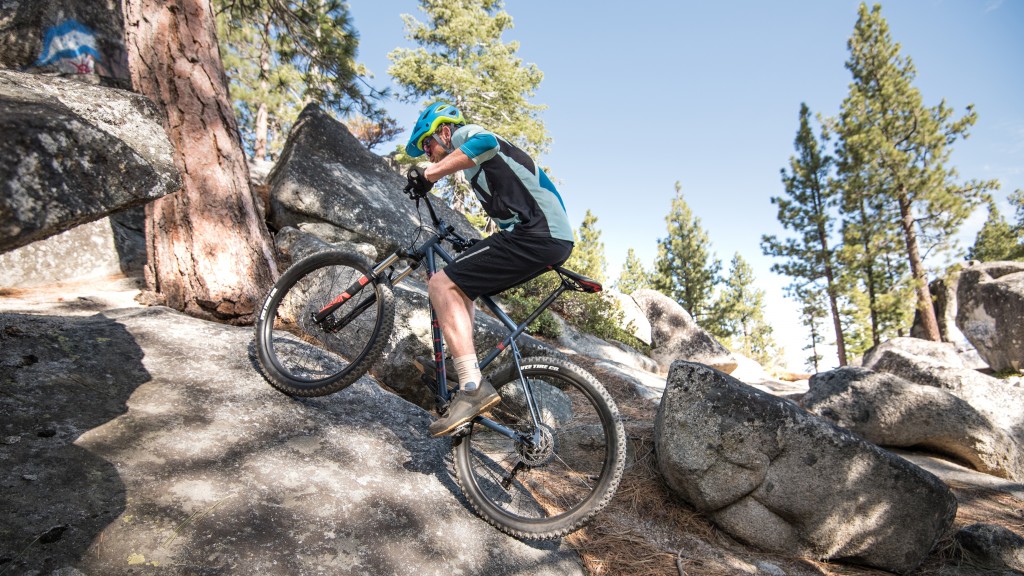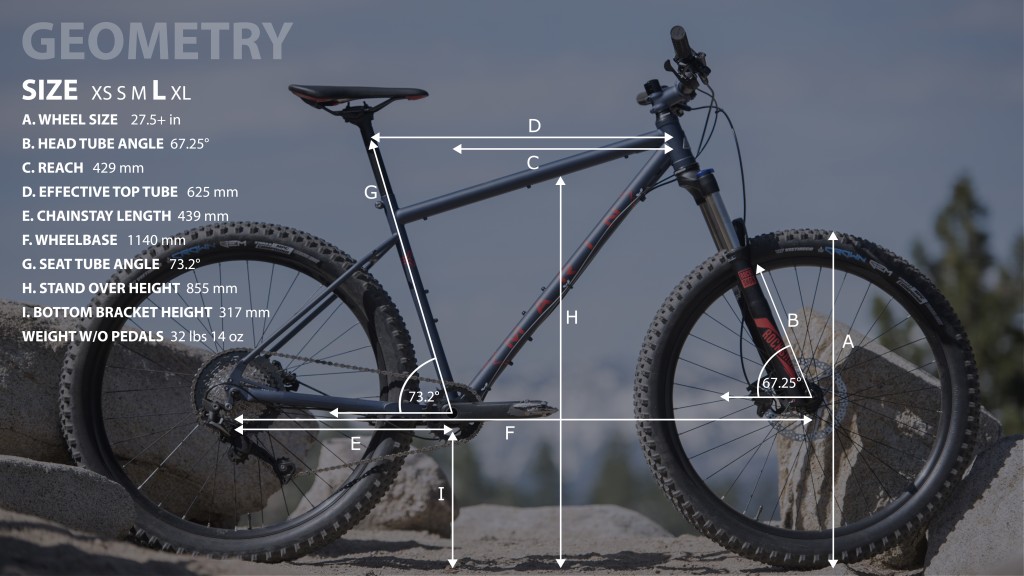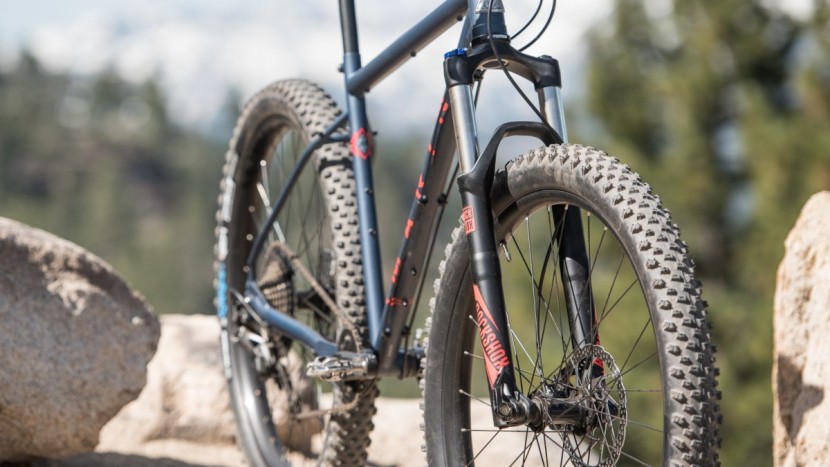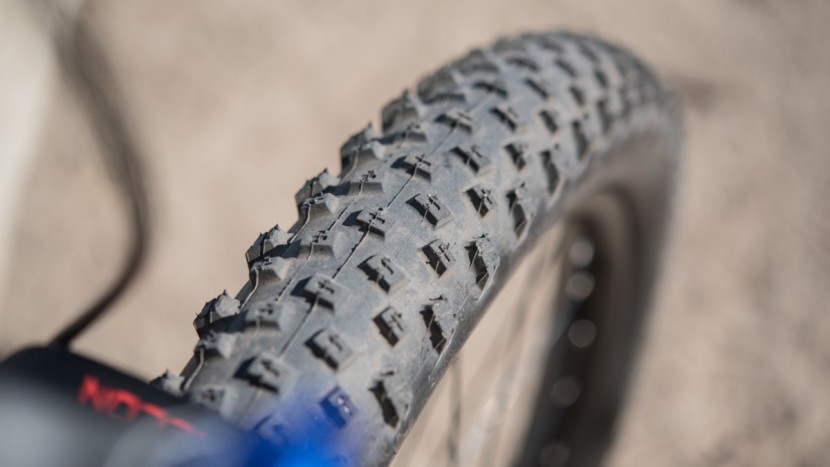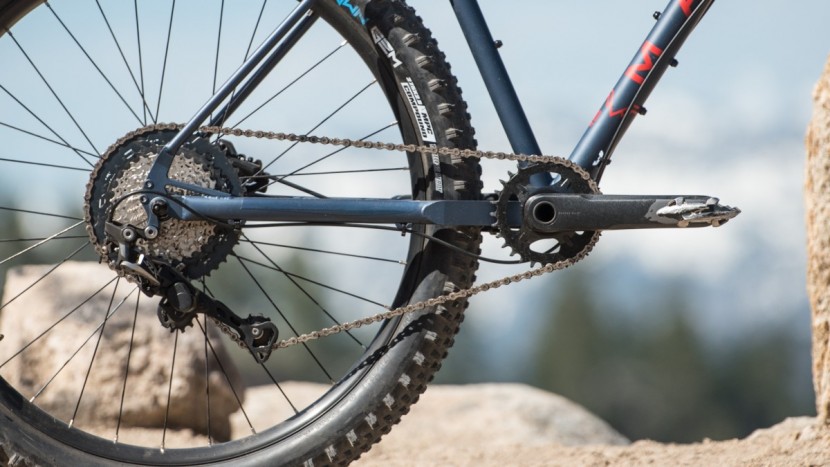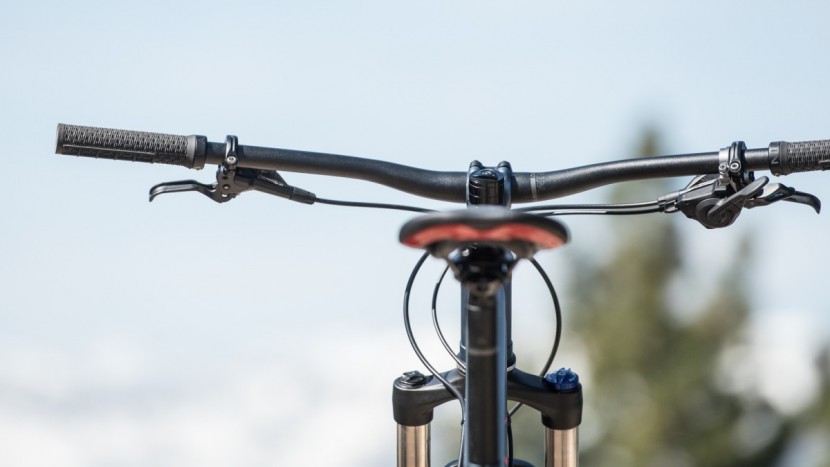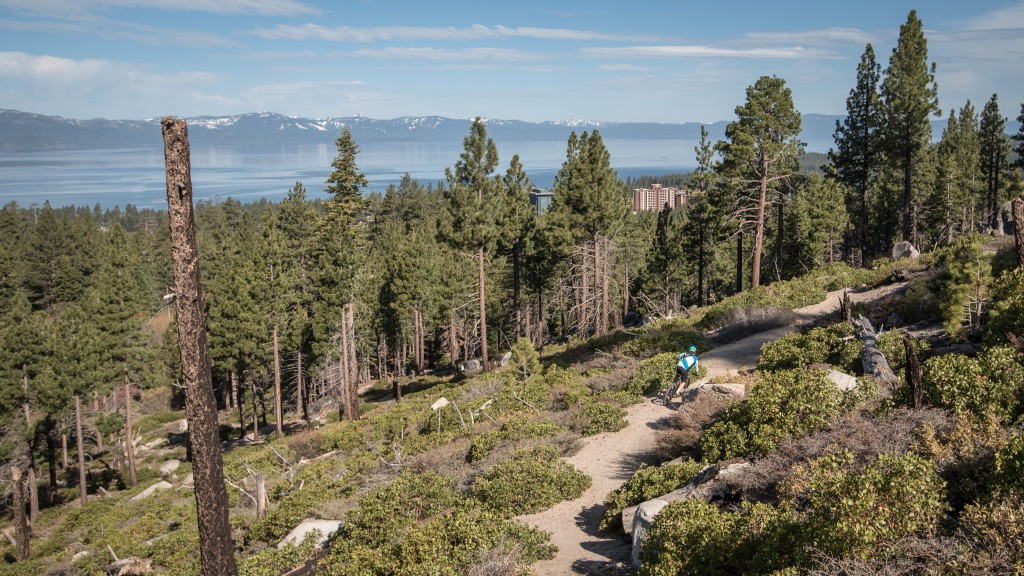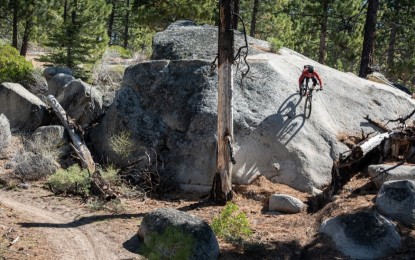Marin Pine Mountain 1 2018 Review
Our Verdict
Our Analysis and Test Results
Three seasoned mountain bike testers rode the, 2018 Marin Pine Mountain 1 alongside the Specialized Fuse Comp 6Fattie. We rode these bikes as hard as we could to help determine the critical ride characteristics. Also, we gained a firm understanding of some of the essential subtleties of these bicycles.
Fun Factor
The Pine Mountain is a good time on the right terrain. The shorter wheelbase and steeper head tube angle make the steering quick and predictable in rolling, moderate, flow trails. Marin paired the steel frame with 27.5 x 2.8-inch Vee tires to provide a smooth ride as well as plenty of traction. When riding through nice compact berms, the Pine Mountain is fine. Once the trails get steep, or conditions get loose the front end of the bike becomes much less predictable and tends to start sliding or washing out. The Pine Mountain 1 that we tested does not come with a dropper post. Not being to get the seat down and out of the way magnifies the downsides of the steeper head angle. It pushes more of the rider's weight out over the front tire on steep descents, tight corners, and jumps.
The cockpit on the Marin is spacious, which gives the rider the impression that the bike is long. But with a wheelbase of 1140mm, it is shorter than some of the top-performing hardtails in the test. You can feel the quickness that the shorter wheelbase provides on all areas of the trail. The Marin is balanced on the ground and in the air but feels heavy once airborne. It doesn't have the playfulness that urges a rider to search out every little side-hit and jump as the Santa Cruz Chameleon does.
The lack of a dropper post and smaller brake rotors are both limiting factors in how rad you can get aboard the Pine Mountain 1. Luckily, at $1299, you could likely add both larger rotors and a bargain dropper post like the Tranz-X to the bike and still be in the same price range as our top-ranked hardtails.
Riding bikes is a fun activity. The Pine Mountain will get you out on the trails and exploring at an excellent price tag. That sounds pretty fun to us.
Downhill Performance
The Pine Mountain can be an enjoyable bike on well-built firm berms and flowy singletrack. The lack of a dropper post and the steep head tube angle make this bike feel squirmy and uncertain when the trails turn steep or loose.
The Pine Mountain has middle-of-the-road geometry. The head tube angle is 67.2-degrees, though for some reason it felt steeper than that compared to other bikes in this test with similar angles. A slacker head angle provides more stability and control on steeper terrain and at higher speeds. The short rear end retains a manageable wheelbase. The shorter wheelbase gives the bike it's quick, snappy feeling but also makes the bike feel less stable or twitchy at high speed.
The Pine Mountain 1 features a RockShox Recon fork which we've ridden on many of our test bikes. The Recon's weakest attribute is its small bump sensitivity. That said, when paired with the 2.8-inch, 27.5+ tires this fork felt better than we experienced on previous test bikes. It is still a far cry from a RockShox Pike or any high-end offerings from Fox, but it was decent. The Shimano BL-MT500 brakes provide pretty good performance for a cheaper brake, and if you are a larger rider and find that the 180mm and 160mm rotors don't deliver enough stopping power to really let loose on the trail, upgrading to 200mm and 180mm rotors would be a relatively cheap and effective fix at $60 for SLX rotors.
Climbing Performance
The Pine Mountain climbs well and is comfortable enough to delay the inevitable entrance into the pain cave on long days. The cross country-style geometry and spacious cockpit exude climbing comfort. The heavier weight makes it tougher to recover and continue powering through a technical climb compared to other test bikes.
The same geometry attributes that limit downhill performance make it a very comfortable and capable climber. The rider sits above the bottom bracket, keeping weight forward on the bike. That forward weighting keeps the front wheel from wanting to lift or wander. Add in the steep head tube, and you have quick and predictable uphill turning performance that makes navigating tight switchbacks a little bit easier.
While uphill handling is quick and predictable, the Pine Mountain is tougher to continue muscling through a technical section when the rider gets kicked offline. One factor is the loss of traction when pedaling out of the saddle. When you're putting the power down while standing, it can be challenging to maintain rear-wheel traction. Given the steep geometry, it is easy to get too much weight over the front wheel and to remove weight/traction from the rear. On technical ascents, line choice and precision is critical.
Frame Design
The Pine Mountain is designed around a steel frame and has a classic look. It lacks many of the modern touches like internal routing that grace many other test bikes. While the mess of cables running down the narrow tubing of the frame doesn't present the clean look of internal routing, it does make repairs and maintenance much more manageable.
Build
The $1,299 Pine Mountain 1 is the least expensive hardtail test bikes. It lacks some modern staples such as a dropper post, but otherwise, it offers a respectable build of tried and true products.
Fork
The Pine Mountain 1 has a 120mm RockShox Recon RL fork. The Recon has 32mm steel stanchions, and the only adjustments are low-speed compression and small amounts of rebound adjustment. While it doesn't feel particularly smooth or plush, this fork is functional.
Wheels and Tires
The Pine Mountain 1 features Marin branded aluminum rims paired with Joytech hubs and Vee Crown Gem 27.5x2.8 tires. The 38mm internal width on the rims is enough to give the plus-sized tire a nice footprint on the dirt. The hub engagement is nothing like you find on a high-end hub, but when you're getting an entire bike for nearly the same price as some wheelsets, there are tradeoffs.
The Vee tires have minimal rolling resistance thanks to relatively low profile ramped knobs in the middle. This is a common practice in plus-sized tires. The traction was decent; we would have preferred a tire with some more pronounced shoulder knobs for both increased traction and a more defined feeling of where the edge exists.
Groupset
Marin uses Shimano components for the majority of this bike. It uses an SLX 1x11 groupset with 30-42t gearing. The shifting remained clean and true throughout testing.
Shimano BT M500 brakes provide reliable stopping power. These Shimano brakes don't have the abrupt hard-hitting power XT, or SLX brakes are known for. They have a softer and more gradual increase in power as the rider pulls the lever.
Handlebars, Seat and Seatpost
Marin kept the cockpit duties in-house. The handlebars, stem, grips, seat post, and saddle are all Marin branded. The handlebars are 780mm wide, which was a great fit for some taller testers. It is always nice to see manufacturers keeping up with the trends to deliver a wide bar that can be cut down if needed. This bike does not come with a dropper post. Instead, a basic alloy post and tool-actuated seat collar regulate when the seat is adjusted.
Build Options
The Pine Mountain is offered in three different builds. We tested the $1,299 Pine Mountain 1.
If the Pine Mountain sounds like the bike you're looking for but you are interested in a higher-end to build, the $2,999 Pine Mountain 2 is the only option. The sizeable jump in price affords you a Shimano XT drivetrain and brakes, a RockShox Pike fork, WTB wheels, and a KS dropper post.
On the lower end, the $990 Pine Mountain transitions to a full-rigid steel machine. A rigid fork steel fork replaces the Rockshox Recon of our test bike. Shimano Deore 1x10 drivetrain and Shimano M425 brakes round out the build that rolls on the same Marin wheels and Joytech hubs as the mid-range version.
Suggested Upgrades
If you are looking to use this bike as your go-to trail bike, the first upgrade should be a dropper post. There are a lot of good options at a reasonable price. The Pine Mountain 1 frame does not have any ports for utilizing an internally routed dropper post. External dropper posts are your only option. Brand-X, PNW components, and Rockshox all offer good externally routed options ranging in price from $155 to $230.
Whether using the bike for trail riding or packing up the saddlebags for a multi-day ride, this Marin would greatly benefit from larger brake rotors and upgraded brakes. Bumping up to an SLX or Deore level brake along with 200/180mm rotors would drastically improve stopping power, something you'll be needing when you add 30 lbs of camping gear to this bike. You can commonly find full SLX brakes along with 200mm front and 180mm rear rotors for around $215 from online retailers.
Value
The Pine Mountain offers excellent value for the right rider. If long days in the saddle and minimal doses of gnar sound like your idea of a good time, this bike will work for you. More importantly, the $1299 price tag is attractive. While some components may be lacking, this shouldn't be problematic for the rider just looking to cruise around.
Suggested Upgrades
The first upgrade for the Pine Mountain should be adding a dropper post. Regardless of how hard you want to push yourself, a dropper seat post will greatly enhance your ride experience. Expect to spend between $200-$400 on a nice post.
If you want to ride the Marin harder, new tires will go a long way. Having a more aggressive tire combo will enhance both cornering and braking abilities. Expect to spend $120-$180 for a set of quality Maxxis tires.
Conclusion
The $1299 Marin Pine Mountain 1 is a great hardtail mountain bike for its intended application. If you are looking to start exploring the world one pedal stroke at a time, this is a great option. It features mounting points for a rear rack, easy access to cables, and a sturdy steel frame that will easily support the added baggage of a long journey. When back on your local trails, the Pine Mountain is still a fun option for riding mellower terrain. This is not a do-it-all hardtail but is a nice way to expand your quiver.


